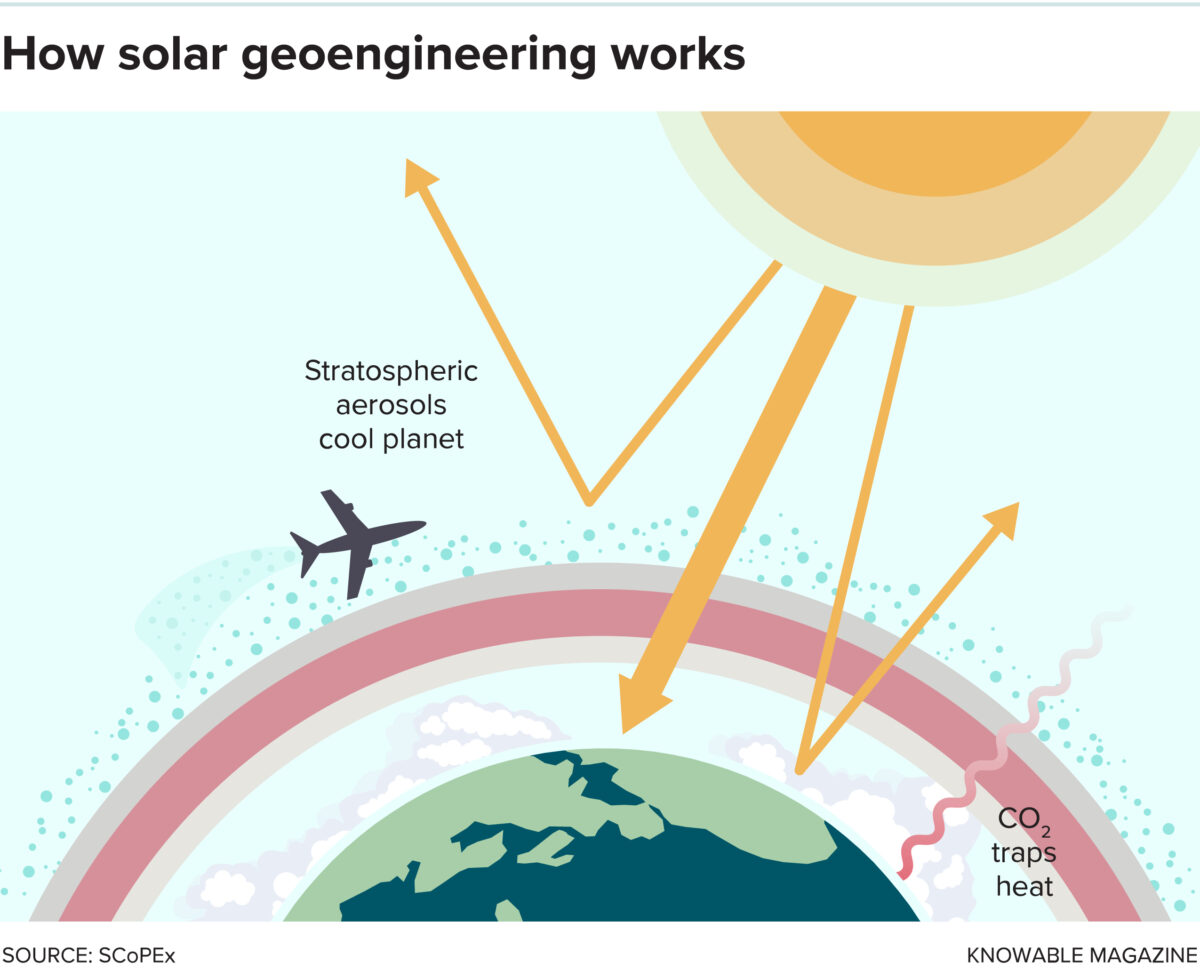How Much Is Climate Change Costing Schools? A New Effort Seeks to Find Out – Education Week

Report on the Intersection of Education and Climate Change: A Sustainable Development Goals Perspective
A recent research initiative, SustainableEd, has synthesized existing data to evaluate the relationship between the education sector and climate change. This report reframes the initiative’s findings through the lens of the United Nations Sustainable Development Goals (SDGs), highlighting the critical role schools play in both contributing to and mitigating climate impacts.
Schools’ Environmental Footprint and Contribution to Climate Change
The education sector’s operational activities present significant challenges to achieving several SDGs, particularly those related to climate and resource management.
Energy Consumption and Infrastructure (SDG 7 & SDG 13)
Public school infrastructure is a major source of greenhouse gas emissions, directly impacting progress on SDG 13 (Climate Action).
- Annual emissions from U.S. public schools are estimated to be between 41 and 72 million metric tons, equivalent to the emissions of 15 million gasoline-powered cars.
- This footprint is inconsistent with the goals of SDG 7 (Affordable and Clean Energy), as demonstrated by the low adoption rates of sustainable alternatives.
- Only 10% of public schools currently utilize solar energy.
- Approximately 97% of the nation’s school bus fleet remains reliant on diesel fuel.
- The report notes significant state-level variation in adopting clean energy solutions, such as electric buses, reflecting differing policy priorities and access to funding.
Food Waste and Consumption Patterns (SDG 12)
School meal programs, while essential, contribute to a substantial environmental footprint, posing a challenge to SDG 12 (Responsible Consumption and Production).
- The production and waste associated with over 7 billion school meals served annually generate an estimated 1.9 million metric tons of carbon emissions.
- U.S. schools collectively waste approximately 530,000 tons of food each year, which decomposes in landfills and releases further greenhouse gases.
- The report calls for further research into food sourcing, selection, and preparation to inform efforts to reduce waste and support sustainable food systems.
Climate Vulnerability and the Impact on Education
Climate change poses a direct threat to educational infrastructure and the continuity of learning, undermining key development goals.
Infrastructure Resilience and Community Safety (SDG 11)
A significant portion of school infrastructure is ill-prepared for the increasing frequency of extreme weather events, jeopardizing the goal of creating resilient and sustainable communities (SDG 11).
- Over 24,000 public schools (approximately 25%) are located in areas designated by FEMA as having a high risk for at least one environmental hazard, including wildfires, floods, and extreme heat.
- A 2020 survey revealed that half of U.S. school districts require major repairs or replacements for critical systems like HVAC, which are vital for operating safely during extreme weather.
- These infrastructure deficits hinder schools’ ability to function as safe community hubs during climate emergencies.
Disruptions to Quality Education (SDG 4)
Climate-related disasters directly interrupt educational delivery, impacting student learning, attendance, and well-being, which conflicts with the mission of SDG 4 (Quality Education).
- Millions of students miss instructional time annually due to school closures caused by events like wildfires and hurricanes.
- These disruptions not only result in learning loss but can also negatively affect students’ mental health and social development.
- The report highlights a lack of consistent data on the financial and operational consequences of these events, which impedes effective policymaking.
The Role of Education in Advancing the Sustainable Development Agenda
Schools are uniquely positioned to drive progress on the SDGs by equipping the next generation with the knowledge and skills necessary for a sustainable future.
Education for Sustainable Development (ESD) (SDG 4 & SDG 13)
Integrating climate change and sustainability into curricula is fundamental to achieving Target 4.7 of SDG 4, which calls for ensuring all learners acquire the knowledge and skills needed to promote sustainable development.
- The report finds that U.S. teachers often lack the training, time, and resources to effectively teach sustainability topics compared to their international peers.
- By educating students on climate science, solutions, and mitigation strategies, schools can foster a generation of environmentally conscious citizens prepared to take climate action (SDG 13).
Preparing for the Green Economy
Education can align with sustainable economic goals by preparing students for careers in emerging green industries.
- The report suggests bolstering Career and Technical Education (CTE) programs to include pathways in sustainable construction, renewable energy, and sustainable agriculture.
- Such programs would support both SDG 4 (Quality Education) and SDG 8 (Decent Work and Economic Growth) by building a skilled workforce for the clean economy.
1. Which SDGs are addressed or connected to the issues highlighted in the article?
SDG 4: Quality Education
- The article discusses the importance of educating children about climate change, its drivers, and solutions. It also highlights the need for teacher training and the role of career and technical education (CTE) in preparing students for jobs in the green economy. Furthermore, it notes that climate emergencies cause students to miss class time, directly impacting the quality and continuity of education.
SDG 7: Affordable and Clean Energy
- The article points out that schools are major energy consumers, primarily for heating and cooling. It explicitly mentions the low adoption rate of solar energy (10% of schools) and electric school buses (3% of the fleet), connecting directly to the goals of increasing renewable energy and promoting clean energy solutions.
SDG 9: Industry, Innovation, and Infrastructure
- The need to upgrade school infrastructure is a key theme. The article states that many schools have inadequate HVAC systems and are not equipped to withstand extreme weather. This relates to the goal of building resilient and sustainable infrastructure.
SDG 11: Sustainable Cities and Communities
- This SDG is addressed through the discussion of sustainable transport (electric school buses), the resilience of community buildings (schools) to climate disasters, and the fact that 25% of schools are in areas at high risk of environmental hazards like floods and wildfires.
SDG 12: Responsible Consumption and Production
- The article highlights significant food waste in schools, estimating that 530,000 tons of food are wasted annually from school meals. This directly relates to the goal of reducing food waste and promoting sustainable consumption patterns.
SDG 13: Climate Action
- This is the central theme of the article. It quantifies the carbon footprint of the U.S. public education system (41 to 72 million metric tons of CO2 annually), discusses the need for mitigation through renewable energy and electric buses, and emphasizes strengthening resilience to climate-related disasters. It also focuses on improving education and awareness about climate change.
2. What specific targets under those SDGs can be identified based on the article’s content?
SDG 4: Quality Education
- Target 4.7: Ensure all learners acquire knowledge and skills needed for sustainable development. The article’s focus on teaching students about climate change, its solutions, and preparing them for green careers directly supports this target.
- Target 4.a: Build and upgrade education facilities to be safe and effective learning environments. The article’s discussion of inadequate HVAC systems and school closures due to extreme weather points to the need to meet this target.
SDG 7: Affordable and Clean Energy
- Target 7.2: Increase substantially the share of renewable energy. The article’s statistic that only 10% of schools use solar power indicates a clear connection to this target.
SDG 11: Sustainable Cities and Communities
- Target 11.2: Provide access to safe, sustainable transport systems. The push for electric school buses over diesel-powered ones is a direct effort towards this target.
- Target 11.5: Reduce the impact of disasters. The article highlights that thousands of schools are in high-risk zones for climate disasters and that students are affected by school closures, aligning with the goal of reducing the impact of such events.
SDG 12: Responsible Consumption and Production
- Target 12.3: Halve per capita global food waste. The specific mention of the 530,000 tons of food wasted annually by schools directly addresses this target.
SDG 13: Climate Action
- Target 13.1: Strengthen resilience and adaptive capacity to climate-related hazards. The article’s finding that 25% of schools are in high-risk areas and need infrastructure upgrades to cope with extreme weather speaks directly to this target.
- Target 13.3: Improve education and awareness-raising on climate change. This is a core recommendation of the SustainableEd report, which calls for better teacher training and student education on climate issues.
3. Are there any indicators mentioned or implied in the article that can be used to measure progress towards the identified targets?
Indicators for SDG 4 & 13
- Proportion of teachers trained in sustainability education: The article implies this is a key metric by noting that U.S. teachers report lacking the knowledge and support to teach sustainability compared to their international peers.
- Number of students affected by climate-related school closures: The article provides a specific example of 211,000 students being affected by wildfire-related closures, which can be used as an indicator of climate impact on education.
Indicators for SDG 7 & 11
- Percentage of schools using solar energy: The article explicitly states this figure is “about 10%,” providing a clear baseline indicator.
- Proportion of school bus fleet that is electric: The article provides a national average (“about 3%”) and state-level data (e.g., buses per 10,000 students), serving as a direct indicator for sustainable transport progress.
Indicators for SDG 11 & 13
- Total carbon emissions from the public education sector: The article provides an estimate of “41 million to 72 million metric tons of emissions annually,” which can serve as a high-level indicator for climate mitigation efforts.
- Proportion of schools located in high-risk zones for climate hazards: The article states that “more than 24,000 public schools (about 25%) are located in census tracts that face a high risk,” offering a clear indicator of vulnerability.
Indicators for SDG 12
- Volume of food waste from school meals: The article quantifies this as “530,000 tons of food schools waste collectively each year,” a direct indicator for Target 12.3.
4. Table of SDGs, Targets, and Indicators
| SDGs | Targets | Indicators Identified in the Article |
|---|---|---|
| SDG 4: Quality Education | 4.7: Ensure learners acquire knowledge for sustainable development. 4.a: Build and upgrade safe education facilities. |
– Proportion of teachers with training to teach sustainability. – Number of students affected by climate-related school closures (e.g., 211,000 students). |
| SDG 7: Affordable and Clean Energy | 7.2: Increase the share of renewable energy. | – Percentage of public schools using solar energy (currently 10%). |
| SDG 11: Sustainable Cities and Communities | 11.2: Provide access to sustainable transport systems. 11.5: Reduce the impact of disasters. |
– Proportion of the school bus fleet that is electric (currently 3%). – Proportion of schools in high-risk zones for environmental hazards (currently 25%). |
| SDG 12: Responsible Consumption and Production | 12.3: Halve food waste. | – Annual tons of food waste from schools (currently 530,000 tons). |
| SDG 13: Climate Action | 13.1: Strengthen resilience to climate-related hazards. 13.3: Improve education on climate change. |
– Total annual carbon emissions from public school infrastructure (currently 41-72 million metric tons). – Percentage of school districts needing to replace/repair critical infrastructure (e.g., HVAC systems). |
Source: edweek.org

What is Your Reaction?
 Like
0
Like
0
 Dislike
0
Dislike
0
 Love
0
Love
0
 Funny
0
Funny
0
 Angry
0
Angry
0
 Sad
0
Sad
0
 Wow
0
Wow
0













































































